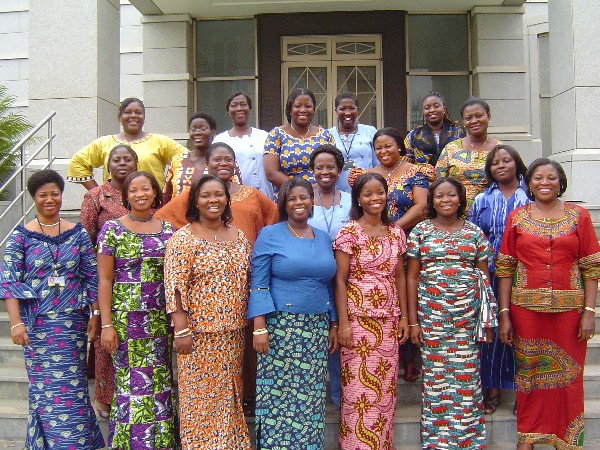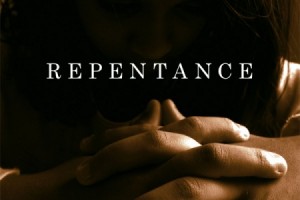Question
Dear Gramps.
Can you please clarify the difference between a curse and a mark? We had an interesting discussion in Sunday school but never came to any conclusion. So many think that all Africans are cursed because of their dark skin. I am inclined to disagree. Hope to hear from you soon so that the whole class will be clear on this subject. Thank you for always helping me in my questions.
June
Answer
Dear June,
Thank you for your question, what is “the difference between a curse and mark.” Though both words are often found in similar lines of thought, they are in fact two distinct and separate things.
A CURSE is a separation from God brought upon a person or people because of disobedience and an unwillingness to follow God’s commands. A curse is the opposite of a “blessing”. We all strive for blessings, and in contrast we do not want to be separated from God. In the scriptures we read:
2 Nephi 5:20 Wherefore, the word of the Lord was fulfilled which he spake unto me, saying that: Inasmuch as they will not hearken unto thy words they shall be cut off from the presence of the Lord. And behold, they were cut off from his presence.
A MARK is something that simply identifies and distinguishes one person or group from another. Marks are displayed in various forms. This could be a sign, symbol, badge, or some identifying factor that helps others differentiate the person with a mark as being someone unique or different from the rest. A positive example of a “mark” could be a merit badge on the uniform of a Boy Scout. A silver badge with an eagle worn on the front of the uniform allows others to easily identify the boy as an Eagle Scout. As a negative example, during World War II, those of the Jewish faith were forced to wear the identifying mark of the Yellow Patch or Star of David on their clothing.
Some marks may not be so easily put on or taken off, but rather some marks are self imposed and can become part of our being. A drug user, especially those addicted to Meth, may become “marked” by the effects of years of drug abuse. The once bright lively individual becomes a shell of their former self and the light that once radiated in them is drowned out and they become marked by a hollow blackness and hopelessness.
In the Book of Mormon we see the two words, curse and mark, sometimes next to each other. As stated above, they are different and separate from each other. Alma 3:14 reads:
“Thus the word of God is fulfilled, for these are the words which he said to Nephi: Behold, the Lamanites have I cursed,…
Here we see that God places a “curse” on the Lamanites or rather separates Himself from them. If He wanted, he could have simply stopped there and only cursed them. However, in an attempt to help others know that this group of Lamanites was cursed He also identified them OR set a “mark” on them. The verse continues:
…and I will set a mark on them that they and their seed may be separated from thee and thy seed, from this time henceforth and forever, except they repent of their wickedness and turn to me that I may have mercy upon them.”
How the mark was actually “set,” we are not told. It has been suggested that the mark may have been self imposed by either a lack of clothing, shaving of the hair, tattoos, war paint, particular jewelry or some other form of a mark(s) that they applied in their wickedness and that would have been easily identifiable to those living in righteousness.
IMPORTANT: I particularly enjoy this verse since it says the curse/separation did not have to be “forever,” but rather it could be removed upon their willingness to simply repent.
Throughout much of the history of the Church, speculation, rumors, opinion, misunderstandings and misinterpretations have been perpetuated among members of the Church and even personally among some of the Church leadership regarding the connection between: race (actual skin color), curses and marks. Some have suggested that as a result of the Lamanite curse, the “mark” placed upon them was an actual physical change in their skin color/ pigmentation. While this idea of “skin color” is expressed in the scriptures, there are those who do not believe it to be an actual physical change but rather believe such ideas to be metaphoric examples only. A metaphor expressing the inner light (whiteness) of the gospel that normally shines forth, but for some this light is regrettably snuffed out because of wickedness, bringing a darkness/void/gloom (blackness) to one’s life. Today, this very blackness/gloom can be seen in the lives of those who reject the commandments of God and continuously live in wickedness. In Jeremiah 8:20-22 we read:
20 The harvest is past, the summer is ended, and we are not saved.
21 For the hurt of the daughter of my people am I hurt; I am black; astonishment hath taken hold on me.
22 Is there no balm in Gilead; is there no physician there? why then is not the health of the daughter of my people recovered?
Also in Lamentations Chapter 5 Heading: Jeremiah recites in prayer the sorrowful condition of Zion:
10 Our skin was black like an oven because of the terrible famine.
It is possible that the Lamanites were not promised that their actual skin would literally change color like that of the chameleon based on their wickedness or righteousness from white to black or black to white again. Whatever the nature of the mark was, it seems that in the Lamanites’ case once the curse was removed, the penitent could have also removed the mark themselves; perhaps by putting away their identifying apparel or laying down their weapons of war.
Regarding the other part of your question, “Africans are cursed because of their dark skin.” In addition to what I have already shared, dealing specifically with Blacks, the Church has issued several statements and articles to help clarify the Church’s official position and to help dispel or correct previous understandings, opinions or ideas:
According to one view, which had been promulgated in the United States from at least the 1730s, blacks descended from the same lineage as the biblical Cain, who slew his brother Abel. Those who accepted this view believed that God’s “curse” on Cain was the mark of a dark skin. Black servitude was sometimes viewed as a second curse placed upon Noah’s grandson Canaan as a result of Ham’s indiscretion toward his father.
The curse of Cain was often put forward as justification for the priesthood and temple restrictions. Around the turn of the century, another explanation gained currency: blacks were said to have been less than fully valiant in the premortal battle against Lucifer and, as a consequence, were restricted from priesthood and temple blessings.
Today, the Church disavows the theories advanced in the past that black skin is a sign of divine disfavor or curse, or that it reflects unrighteous actions in a premortal life; that mixed-race marriages are a sin; or that blacks or people of any other race or ethnicity are inferior in any way to anyone else. Church leaders today unequivocally condemn all racism, past and present, in any form.
Church Statement Regarding ‘Washington Post’ Article on Race and the Church
For a time in the Church there was a restriction on the priesthood for male members of African descent. It is not known precisely why, how, or when this restriction began in the Church but what is clear is that it ended decades ago. Some have attempted to explain the reason for this restriction but these attempts should be viewed as speculation and opinion, not doctrine. The Church is not bound by speculation or opinions given with limited understanding.
We condemn racism, including any and all past racism by individuals both inside and outside the Church.
It is true that flashy headlines and racist narratives against the Church can be popular to many, but once someone takes the time to actually learn the real facts we all better understand that:
In theology and practice, The Church of Jesus Christ of Latter-day Saints embraces the universal human family. Latter-day Saint scripture and teachings affirm that God loves all of His children and makes salvation available to all. God created the many diverse races and ethnicities and esteems them all equally.
Thank you for your question June,
Gramps







